February of 2024 saw a progressive weather pattern across the region, with periods of mild and dry weather along with occasional colder and unsettled weather with passing weather systems. One passing system early in the month was able to tap into eastern Pacific moisture, as well as some Gulf of America moisture, to bring widespread rain and snow to eastern Colorado on February 3rd, with both Colorado Springs and Pueblo setting daily precipitation records. In fact, the 1.06 inches of precipitation recorded in Pueblo on February 3rd also set a new maximum daily precipitation for the month of February, surpassing the 0.90 inches recorded on February 10th of 1897. A few passing systems through out February also brought windy conditions, along with the return of critical fire weather conditions to portions of south central and southeast Colorado. For the month of February as a whole, above normal temperatures and at and above normal precipitation were experienced across south central and southeast Colorado, save for spotty below normal precipitation across the Continental Divide.
The following graphics depict monthly temperature and precipitation departures from normal across the state for the past month of February.
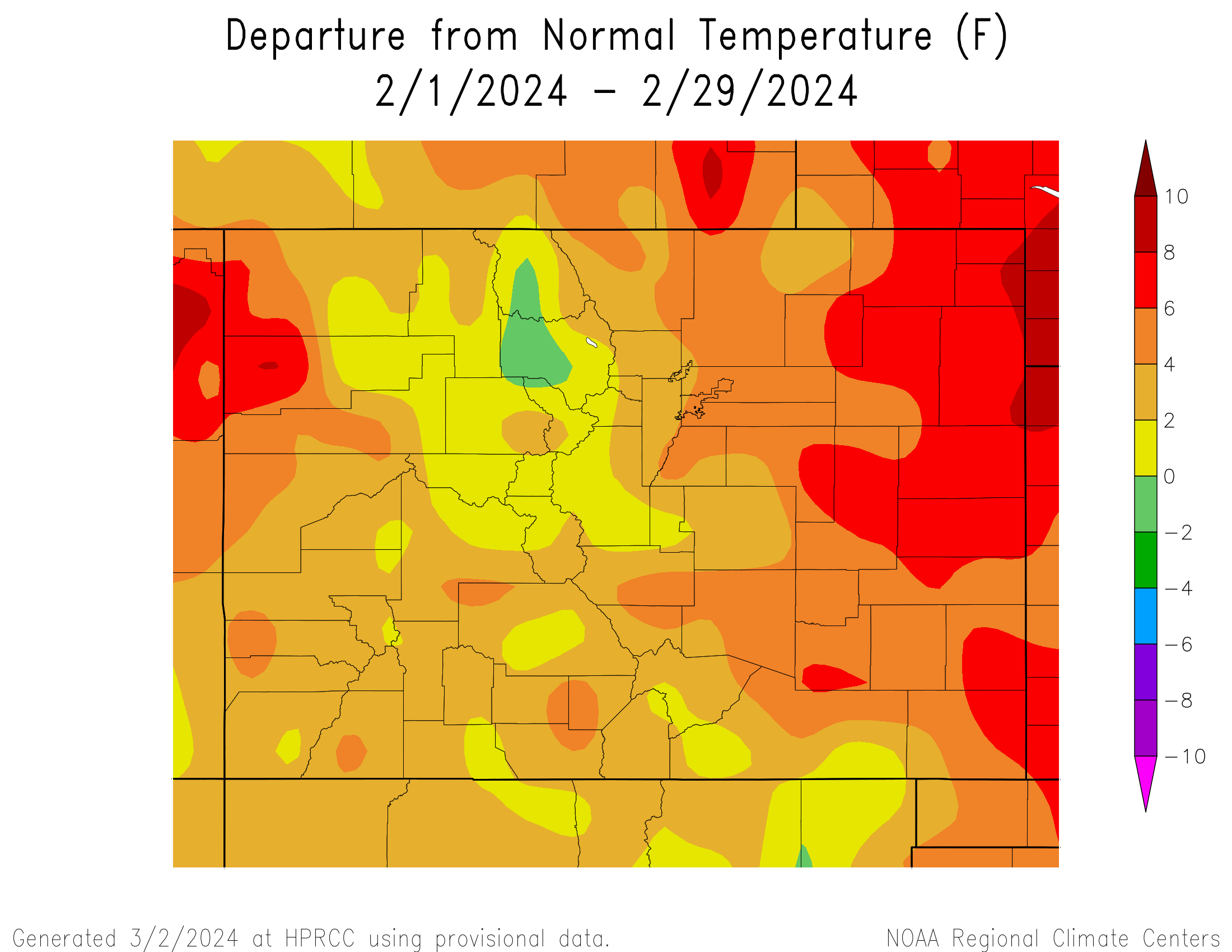 |
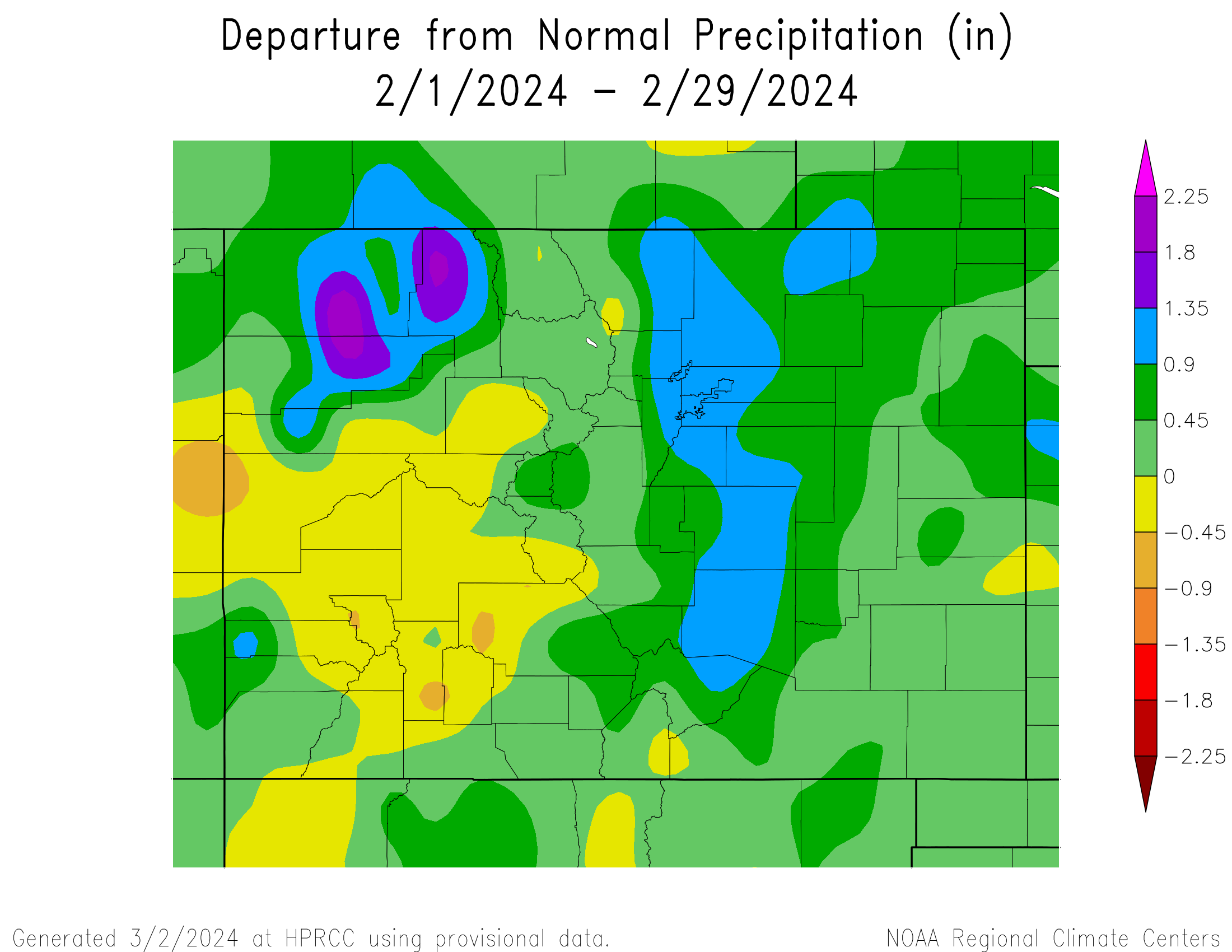 |
The preliminary average temperature in Alamosa for the past month of February was 29.0 degrees. This is 4.7 degrees above normal and makes February of 2024 tied as the 11th warmest February on record in Alamosa. This remains well behind the warmest February of 1995, when the average monthly temperature was 33.2 degrees. The average February maximum temperature in Alamosa was 45.3 degrees, which is 4.1 degrees above normal. The average February minimum temperature in Alamosa was 12.7 degrees, which is 5.3 degrees above normal. Alamosa recorded 0.46 inches of precipitation through the month of February. This is 0.18 inches above normal and makes February of 2024 the 12th wettest February on record, well behind the 1.42 inches of precipitation recorded in February of 1963. Alamosa recorded 4.5 inches of snow through the month of a February, which is 0.4 inches above normal. Alamosa set a daily maximum precipitation record in February of 2024.
.png) |
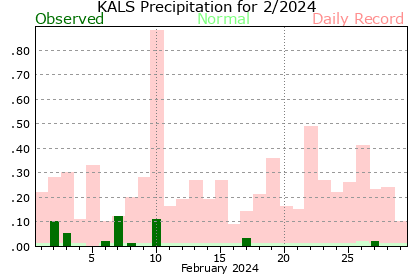 |
The preliminary average temperature in Colorado Springs for the past month of February was 38.7 degrees. This is 5.3 degrees above normal and makes February of 2024 tied as the 8th warmest on record in Colorado Springs. This remains well behind the warmest February of 1954 when the average monthly temperature was 41.1 degrees. The average February maximum temperature in Colorado Springs was 51.1 degrees, which is 4.6 degrees above normal. The average February minimum temperature in Colorado Springs was 26.3 degrees, which is 6.1 degrees above normal. Colorado Springs recorded 1.37 inches of precipitation through the month of February. This is 1.05 inches above normal and makes February of 2024 the 5th wettest February on record, through well behind the 2.45 inches of precipitation recorded in February of 1987. Colorado Springs tallied 11.8 inches of snowfall through the month of February. This is 7.2 inches above normal and makes February of 2024 tied as the 12th snowiest February on record, well behind the 23.2 inches of snow recorded in February of 1987. Colorado Springs set a daily maximum precipitation record in February of 2024.
.png) |
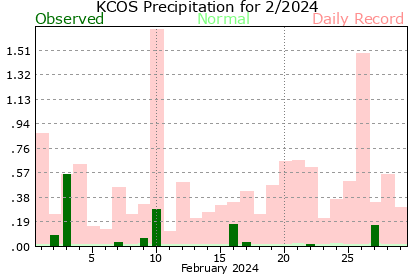 |
The preliminary average temperature in Pueblo for the past month of February was 39.9 degrees. This is 4.8 degrees above normal and makes February of 2024 the 15th warmest February on record in Pueblo. This remains well behind the warmest February of 1954 when the average monthly temperature was 43.9 degrees. The average February maximum temperature in Pueblo was 55.5 degrees, which is 4.4\ degrees above normal. The average February minimum temperature in Pueblo was 24.3 degrees, which is 5.3 degrees above normal. Pueblo recorded 1.48 inches of precipitation through the month of February. This is 1.16 inches above normal and makes February of 2024 the wettest February on record, surpassing the 1.47 inches recorded in February of 1897. Pueblo tallied 5.4 inches of snow through the month of February, which is 0.7 inches above normal. Pueblo set a daily maximum precipitation record on February 3rd, when 1.06 inches of precipitation was recorded. This not only crushed the previous record precipitation for February 3rd, of 0.36 inches in 1936, but also set a new maximum daily precipitation for the month of February, surpassing the the 0.90 inches recorded on February 10th of 1897.
.png) |
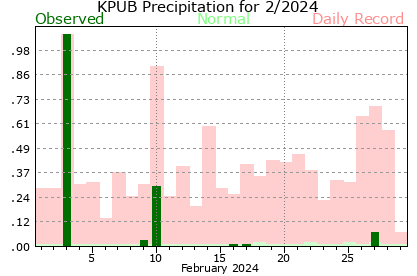 |
Looking ahead into March in Alamosa, the average high and low temperature of 47 degrees and 13 degrees on March 1st, warm to 57 degrees and 21 degrees by the end of the month. The average temperature for the month of March in Alamosa is 35.2 degrees. Alamosa averages 0.51 inches of precipitation and 4.3 inches of snow through the month of March.
In Colorado Springs, the average high and low temperature of 50 degrees and 23 degrees on March 1st, warm to 58 degrees and 31 degrees by the end of the month. The average temperature for the month of March in Colorado Springs is 41.1 degrees. Colorado Springs averages 0.79 inches of precipitation and 5.7 inches of snow through the month of March. On average, March is the snowiest month of the year in Colorado Springs.
In Pueblo, the average high temperature and low temperature of 55 degrees and 23 degrees on March 1st, warm to 65 degrees and 31 degrees by the end of the month. The average temperature for the month of March in Pueblo is 43.9 degrees. Pueblo averages 0.82 inches of precipitation and 4.5 inches of snow through the month of March.
Below is the Climate Prediction Center's (CPC) temperature and precipitation outlook for March of 2024, which gives equal chances of above, below and near normal temperatures and leans to above normal precipitation across south central and southeast Colorado.
.gif) |
.gif) |